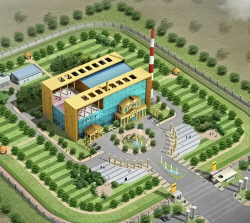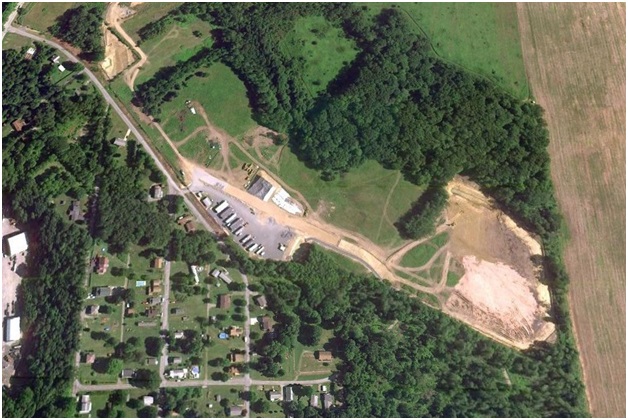
Blog
-
Geiger Readings for February 02, 2014
Ambient office = 106 nanosieverts per hourAmbient outside = 114 nanosieverts per hourSoil exposed to rain water = 106 nanosieverts per hourIceberg lettuce from Central Market = 62 nanosieverts per hourTap water = 89 nanosieverts per hourFiltered water = 84 nanosieverts per hour -
Geiger Readings for February 01, 2014
Ambient office = 65 nanosieverts per hourAmbient outside = 73 nanosieverts per hourSoil exposed to rain water = 70 nanosieverts per hourBanana from Central Market = 111 nanosieverts per hourTap water = 108 nanosieverts per hourFiltered water = 101 nanosieverts per hour -
Radiation News Roundup January 31, 2014
-
Geiger Readings for January 31, 2014
Ambient office = 84 nanosieverts per hourAmbient outside = 80 nanosieverts per hourSoil exposed to rain water = 97 nanosieverts per hourRomaine from Central Market = 106 nanosieverts per hourTap water = 95 nanosieverts per hourFiltered water = 78 nanosieverts per hourDover Sole – Caught in USA = 64 nanosieverts per hour -
Nuclear Reactors 204 – Jordan Looks To Nuclear Power For Future Electricity
There is great concern among the nations that have nuclear weapons about other nations obtaining them. There are international treaties that exist for the purpose of insuring that signatory nations do nothing that could result in the proliferation of nuclear weapons. The United States has bilateral treaties for civil use of nuclear power which include a clause about the enrichment of uranium into a concentrated form that would be suitable for use in a nuclear warhead. This issue has been in the news lately because of the fear that Iran may develop nuclear weapons.
The U.S. and the Middle Eastern nation of Jordan have been talking about nuclear cooperation for years. These discussion became especially relevant in 2011 when the Egyptian revolution led to the repeated destruction of the Sinai natural gas pipeline which had been Jordan’s most consistent source of energy. In 2012, energy disruptions cost Jordan a twenty percent budget deficit. Since then, Jordan has been very interested in nuclear power. They would like to see the construction of two one gigawatt nuclear power plants. They have express the intent to be getting at least thirty percent of their electricity from nuclear reactors by 2030.
Jordan insists that it has the right to enrich uranium but the U.S. wants them to forego that right in return for U.S. cooperation in the Jordanian nuclear program. Jordan has no oil but they do have deposits of uranium that may contain as much as thirty five thousand tons. This could provide Jordan with all the electricity that it needs for a hundred years. Jordan also has plans to mine and sell uranium on the world market.
One of the planned reactor sites is in the Jordan River Valley which contains a major earthquake fault line. Israel raised concerns about this site with Jordanian officials in a meeting in 2009. It is ironic that the Jordanians at the meeting pointed out that Japan has a lot of earthquakes but that it has been able to build and safely operate fifty nuclear reactors. Two year later, the Fukushima disaster called into question the wisdom of locating nuclear reactors near fault lines.
One of Jordan’s propose nuclear plant sites is in the tribal lands of the Bani Sakr, Jordan’s largest tribe. A member of the Jordanian Parliament is from that tribe and a staunch opponent of nuclear power. One of the questions that she raises has to do with the availability of huge amounts of cooling water for the propose nuclear plant. Jordan has serious problems with accessing sufficient water. She also questioned whether or not Jordan has enough nuclear technicians to safely operate such a plant. The cost of the plant is another issue of contention with the ten billion dollar estimated cost almost equal to the entire annual budget of Jordan.
Supporters of Jordanian nuclear power dismiss concerns over water. They say that they will use waste water from a nearby waste treatment plant for one site. Another proposed site could get water from the Red Sea after it had been pumped to the site and desalinated. A research reactor is being built by a Korean consortium and Jordanian university programs will provide nuclear technicians. With respect to finances, Russia, the country that is going to build the Jordanian reactors, will provide funds for a forty nine point nine percent share.
The geopolitical situation in Jordan will play a role in their ultimate decision of whether or not to actually build the proposed nuclear reactors. In spite of their desperate need for power, Jordan has serious financial problems. Refugees from the conflict in Syria are flooding into Jordan. In addition, there is a concern that if the Syrian conflict spills over into Jordan, there could be serious dangers of intentional or accidental destruction of nuclear power plants endangering the Jordanian people. Jordan should invest in solar power and forget about nuclear power.
Artist’s concept of Jordanian research reactor:
-
Geiger Readings for January 30, 2014
Ambient office = 137 nanosieverts per hourAmbient outside = 78 nanosieverts per hourSoil exposed to rain water = 80 nanosieverts per hourBanana from Central Market = 98 nanosieverts per hourTap water = 89 nanosieverts per hourFiltered water = 66 nanosieverts per hour -
Radioactive Waste 115 – Shallow Lands Disposal Area Cleanup In Pennsylvania Cost Estimates Rise 1000%
I have blogged many times about the problems of cleaning up nuclear contamination. The federal government and the nuclear industry are always telling us that nuclear power reactors will be safe, cheap and low carbon sources of energy. But they are not so vocal about all the contaminated sites that are still being cleaned up after decades of work such as the Hanford Nuclear Reservation.
The Shallow Land Disposal Area is in Parks Township, about twenty miles north of Pittsburgh. Large amounts of radioactive waste were buried at the SLDA decades ago by Nuclear Materials & Equipment Corporation, a local company that worked on nuclear projects for the federal government and other organizations. SLDA was eventually purchased by Babcock & Wilcox, an energy products and services company.
The Army Corp of Engineers has spent years planning for the cleanup of SLDA. In 2011, the Corp began excavating one of the ten known trenches that contained nuclear waste. After only a few weeks of digging, the excavations were stopped. The Corp stated that the a contractor had violated safety protocols. In addition, it was reported that a “unexpectedly large amount of complex materials” were discovered during excavations. When asked what the materials were, the Corp would not comment. Shortly thereafter, the Corp classified some of the information about the SLDA based on a specific security rule that deals with “special nuclear material.” Plutonium and enriched uranium suitable for use in making nuclear weapons are covered by this security rule.
Earlier this month, the Corp presented the revised cleanup plan for the SLDA. They said that what was discovered during the 2011 excavations revealed “an unanticipated and immediate need for fundamental changes to site operations.” Originally, the cost of cleanup was estimated to be around forty four million dollars. Purchase of additional safety equipment, adding more personnel and changing procedures have now raised the estimated cost of cleanup to four hundred and twelve million dollars, roughly ten times the original estimate.
One of the reasons for the increased cost estimate was “to prevent a nuclear criticality.” If enough fissionable materials such as plutonium and/or enriched uranium are brought together, they could produce a nuclear chain reaction that would be catastrophic with possible release of a great deal of radiation.
The Corp also reported that they were not sure about what else they might find at the SLDA. There could be more radioactive materials that have not been discovered yet. Both critics of the cleanup and contractors have reviewed historical documents and concluded that there is evidence of burial sites other than the known ten trenches. The revised plan for the site cleanup calls for excavations to begin in 2017 and continue for up to ten years.
There are many other sites in the U.S. where nuclear waste has been buried over the decades since the 1950s. A great deal of this work was done for the Department of Defense and there was little concern about environmental contamination. In addition, there was also very poor record keeping. Soon or later, these sites will have to be cleaned up or radioactive materials will keep escaping into the ecosystem and posing a threat to public health.
Shallow Land Disposal Area:





